
Laura Langston
Profile by Dave Jenkinson.
Books by Laura Langston This article is based on an interview conducted in Winnipeg on October 8, 2003. Visit Laura's home page at http://www.lauralangston.com
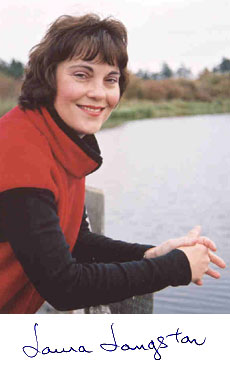 Born in Victoria, BC, on August 25, 1958, Laura lived there "until I was 10. Then we moved to Vancouver and, other than living for a year in Edmonton, I stayed on the coast until I was in my twenties and my husband, Barry, and I moved to Winnipeg for five years."
Born in Victoria, BC, on August 25, 1958, Laura lived there "until I was 10. Then we moved to Vancouver and, other than living for a year in Edmonton, I stayed on the coast until I was in my twenties and my husband, Barry, and I moved to Winnipeg for five years."
The public library played an important role in Laura's childhood. "I remember my mother taking my brother and me on the bus to the Victoria library. My brother was a baby at the time, and I was maybe three and a half or four. I can remember the big boulevard with huge trees and the long walk up a massive flight of stairs into a big stone building. I went back years later, and there are only three stairs going into the building, which is now a bank. Back then, the library was hushed, and it had that beautiful book smell. I couldn't take books out on my own until I could write my name. My mother practiced with me for weeks until I could do it. I was so nervous when I went up to the desk, but the librarian made a big fuss over me, and I was so proud when I had my own card. Going to the library was always a big deal as a kid, and I often jokingly say that if I ever had to be stranded somewhere, I'd be quite happy if it was a library with a bathroom and running water."
"After the age of 14, I didn't live at home. My parents had been divorced for several years, and the family kind of fell apart. I lived with my grandmother for a year, and then I lived with my girlfriend's family which was a godsend. I wanted to be a writer from the time I was in grade three or four. My mother knew no writers. She was concerned about my survival and making a living, and so she said, 'Well, you better have a backup plan. You won't be able to make a living as a writer.' I thought, 'Journalism would be good. I could still write, and I loved current events. After high school, I wanted to go to Ottawa's Carleton University for journalism, but being on my own, I couldn't afford it."
"At the time, there were job opportunities in banks, and so I became a bank teller. I didn't like the job because I'm very bad with numbers. Not only that, it was a quiet, serious, businesslike place, and that made me uncomfortable too. So, I would look at peoples' paychecks to see where they were coming from, and I would talk to them, which was my own way of networking. We got a lot of flight attendants in; I thought maybe I could go to work for Air Canada, fly around the world and write about it! One day, a lady walked in with a cheque from the CBC, and I said, 'Oh, I'm really interested in the CBC because I've always wanted to be a journalist.' We talked, and she said she was being transferred, but they needed someone to fill her job. Since it was a job dealing with numbers, she remarked, 'But you, as a bank teller, would be great!' I thought, 'Well, I could always segue into the newsroom.'"
"The long and short of it is that I went to see her boss that afternoon, and I got the job. The weird thing is that this woman had never been to that bank branch before, but she just happened to come in and just happened to get me as a teller. I went to CBC, and I was still stuck working with numbers, but the atmosphere was way more creative than the bank, and I was happier there. I still wanted to be a journalist, and so I went to the British Columbia Institute of Technology at night with CBC paying half and me the other half. After I worked at CBC for two years, Barry and I married and did a six-month mini van honeymoon in Europe. When we came back, I worked in a private radio station in Langley and another in Richmond, BC."
As noted earlier, Laura spent five years of her married life in Winnipeg. "We were living in Vancouver and watching house prices go up by about $8,000 a month. We decided to move to Winnipeg so we could get into the housing market. My dad was there – he was born there and it was Barry's hometown too – and we liked the city. We had what we thought of as a five-year plan. I was in radio broadcasting at the time, and Barry suggested, 'Why don't you go out and see if you can find a job? If you do, we'll move.' I went and quickly found a job. Barry got a transfer, and we moved to Winnipeg and did our five-year plan almost to the month. My first job in Winnipeg was in private radio, but I wasn't entirely comfortable. Private radio's a different atmosphere. It's more entertainment, not always real journalism. I wanted to focus on writing and journalism, and so I freelanced at CBC Winnipeg for a year. Then, a job came open in the newsroom there. I applied, got it, and juggled newsroom reporting with documentary work, which was neat because it let me delve deep into subjects and that's always rewarding."
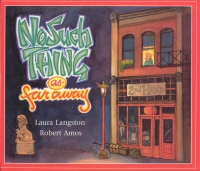
"All the while I was in radio, I wanted to write fiction. I wanted to write books and stories, both for kids and adults, but I never quite knew how to make that happen or, more specifically, how to get from start to finish. I would start a novel, but it would languish. When you're a journalist, it's a very busy career. You work long hours, and it's demanding and it required a certain focus – or at least in my case it did! When my daughter, Tlell, was born, I was on maternity leave from CBC, and Barry's Winnipeg company went bankrupt. Barry said, 'Maybe we should put our house on the market, and, if it sells, we'll move.' Well, the house sold in two days, which was quite unusual, and we ended up back in BC very fast! I knew that if I was going to remain a broadcast journalist and move up in the business, then I was going to have to put in long hours and probably travel. My true love had always been writing, and so, when Tlell was a baby, I decided I would stay home with her and write. We set up a little office, and I began writing stories and articles. To bring in the money to pay the bills, I still did some freelancing for CBC. Prior to No Such Thing As Far Away being published, I had articles published for adults on various things like food and nutrition and current affairs. During the summers, I did a little bit of 'stringing' for Maclean's
magazine."
"I had sent a story, that has yet to be published, to Ann Featherstone who, at the time, was the editor at Orca Book Publishers. Ann put a little handwritten note on the story saying that she'd really liked it, but, for a variety of reasons, it wasn't quite what she wanted. I contacted her, and we first struck up a business relationship and then a friendship. During one of many conversations, she said, 'I'd really like to do a story on Victoria's Chinatown.' At that point, she hadn't necessarily wanted the story as much as she wanted to highlight Robert Amos's art. However, when she said that to me, something clicked, and I thought, 'I've spent a lot of time in Chinatown.' My grandfather wasn't Chinese, but he was a herbalist. As well, different cultures are important to me, and so I started thinking and writing. The story evolved, and I sent it to her. Ann liked it, and we went from there."
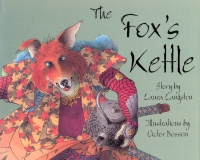
"Another conversation with Ann Featherstone led to Laura's next two books. "Ann told me that she really liked Vic Bosson's art. Vic's not Japanese, but he does Japanese art, and he's incredibly talented. After I saw his art, I was blown away by it, and I really wanted to do something with him. I decided to do a retelling because I wasn't ready to write something original. I think I was still too insecure to trust my own stories. I began researching Japanese folktales which are incredibly violent and macabre. Doing a retelling was really difficult. First I had to find one that I wanted to do, and then I had to find all the versions. I did find something that I thought I could work with, and it became The Magic Ear."
"Vic's a sweet, lovely man, but he's also very cagey. I was visiting with him one day just as The Magic Ear was coming out, and he leaned across the coffee table and asked, 'Have I ever shown you my foxes?' When I responded, 'No,' he pulled out these incredible fox paintings and laid them on the table. Seeing them, I said, 'Vic, we have to do a story with these foxes,' to which he replied, 'I was hoping you'd say that.' The challenge with the next book was that it had to be an original story, not a retelling. Again, I had to do a lot of research to make sure that I maintained cultural integrity in The Fox's Kettle. People always think that picture books are fast to write, but I spent a good year, while I was writing other books and articles, doing research, talking to people, and reading volumes on mythology and Japanese animals and really learning and understanding the fox mythology. I wanted the central character in The Fox's Kettle to be a heroine. With traditional tales like The Magic Ear, you can't change the central character's gender without making drastic changes to the original. When you do that, you get out of the realm of a retelling. But with The Fox's Kettle, I thought, 'I would like to see a woman in a position of strength and be the driving force of the story.'"
Pay Dirt!, a nonfiction book, is also connected to Ann Featherstone. "I love history, and Ann called saying, 'We'd like you to consider doing a book on the Gold Rush.' I was intrigued but not convinced, and again one of these serendipitous things occurred. We had company that night for dinner, and I mentioned Ann's call. One of our guests remarked, 'Oh, that would be really interesting," and I asked,'What makes you say that?' He replied, 'Well, the wild camels." And I went, 'What wild camels?' I thought he was joking, but he explained that there actually had been wild camels in BC during the Gold Rush period. After hearing that, I thought, 'That is too good. I want to do this book.'"
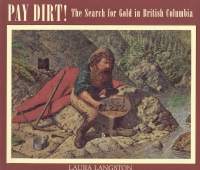
"When I told Ann that I'd like to give it a shot, she said, 'Do an outline and give us an idea of your focus.' When I went in to meet with Bob Terrel and with Ann, I said, 'I really want it to read like a story and not a textbook. How do you feel about that?' And they replied, 'Good. That's what we'd like.' I think I may have even done a sample chapter at that point. They tweaked the outline, but it flows from a chronological point of view. I wrote Pay Dirt! while I was pregnant with my son Zachary. I had a difficult pregnancy and was supposed to be off my feet the whole time, but I spent a lot of time in the archives with a laptop and on the couch also with a laptop and books and papers everywhere."
After Pay Dirt!, there's a gap of four years before Laura's next book, a middle years novel called A Taste of Perfection, was published. "During that time I was focusing on my kids, and I wanted to write novels. I also write my garden column for Canadian Gardening Magazine, and I do a fair bit of nonfiction writing still. So, there was a lot of juggling going on. After I wrote A Taste of Perfection, my then agent placed it with Stoddart. I was thrilled to have the sale, but, within about three weeks, warning bells started to go off. When I said to her, 'I think there may be a problem, and we may want to reconsider this,' she responded, 'No, no, no.'"
"Ultimately, my relationship with that agent ended, and I went with Leona Trainer at TLA who saved me because Stoddart did go under. A Taste of Perfection was printed and in the warehouse, ready for distribution, and it sat there for about six months. It could have literally languished, but TLA negotiated on behalf of their authors to make sure that we were paid what we were owed. Later, Fitzhenry & Whiteside took the whole Stoddart list, and the books came out from F&W which has been a mixed blessing. Fitzhenry's been excellent to deal with, and they can't do enough for their writers, but I also think it's been a marketing challenge for them because they've inherited the whole Stoddart list that they're trying to publicize and distribute. Plus, I'm really bad with the publicity part of the whole business. I'm not very good about phoning up a bookstore and saying, 'Hey, how would you like to host me for a launch?' "So, while A Taste of Perfection probably didn't get quite the publicity that I would have liked, I'm very happy with it. It's a light read. It's not meant to be a serious story although some serious things happen."
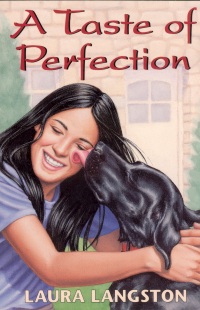
"When I go to schools, I always tell kids that writing a book for me is like making a pizza because, when you make a pizza, you bring bits and pieces from everywhere. A book is like that for me. It's in my head for a long time, and I get all these different things that come together. With A Taste of Perfection, part of it came from the fact that, as a very young child, my daughter had warts, and we went through all sorts of things to try to get rid of them, and she was really upset about this. Tlell is into appearances. She wouldn't be upset with me saying this as she's actually thinking of a career in the make-up industry, and so she's quite into the way things look whereas I'm not at all. Another part of the story came from the fact that, when I was a child, my grandmother bred dogs and so I was thinking about her during the brainstorming stage."
"Again, synchronicity always happens. We were on a holiday camping up Vancouver Island when I saw a three-legged dog that was just so full of life and was so loving. I stopped and talked to the owner and asked her how it had happened. That ended up in the book too. I was going to make the book's dog a White Shepherd because my grandmother had bred them, but then I found that you can't take White Shepherds into the show ring. I knew that I wanted a dog show to be part of story, and so the dog became a Black Lab."
"I had also decided that I would name the dog Mister Lavender Blue. I often talk about my books with my kids. Tlell's response was, 'Why are you using the name Lavender Blue? That's really a dumb name, Mom.' And I said, 'It came to me, and that's the dog's name.' As part of my research, I decided that I had better interview some breeders. One afternoon, I was sitting in a breeder's living room, and she had her dogs outside, but she had one as a special pet, and it came running in, and she said, 'Oh, this is Blue.' I got a shiver down my spine and I thought, 'I'm right. I know this dog's supposed to be Lavender Blue.'"
While being a parent can reduce writing time, it has its own compensations for authors. "I think having kids and being around kids and also being around other parents, you hear things. It's not like I'm stealing or revealing personal information, but it's just part of the process that things 'go in.' Everything's material, in one form or another. I've heard other parents say to their kids, 'You're too young for that,' and I can remember my dad saying to me, 'You're too young to wear deodorant,' and my thinking, 'No, I'm not. I need to wear deodorant. I'll wear deodorant. Like what does age have to do with it?' So, in A Taste of Perfection when 12-year-old Erin has hairy legs and her mother won't let her shave them, well, some of that comes from real life, and some of it comes from my imagination."
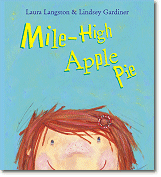
Mile-High Apple Pie is Laura's first book to be originally published in England. "Leona placed me there, and I'm excited with the way it has turned out. Bodley Head, an imprint of Random House, liked the story right away, but they wanted me to shorten it. I always write 'long.' They wanted it shortened and shortened and shortened, and every time they would come back and say, 'Shorten it,' I'd think, 'Oh. I can't,' and then I would, and it would be better. The publisher found Lindsey Gardiner to do the illustrations. When I first saw her illustrations, I was absolutely shocked because, as I was writing the book, I had a visual image in my mind of how the illustrations would look, and Lindsey's art is so different from what I was expecting. It really took me aback at first. Bodley Head had just sent me a few preliminaries, but then they sent me these big parcels from England with all the colours and separations, and I fell in love with Lindsey's pictures. I'm thrilled to be working with Lindsey, and I'd like to do another book with her."
"I'm very fond of the story in Mile-High Apple Pie. I think it's one of my best picture books yet. Viking in the United States has picked it up, and they're bringing it out as Remember, Grandma? in May, 2004, and Random House in Canada will publish it in August, 2004. It's also being translated into Spanish, Portuguese, and German. The book's about a little girl whose grandmother comes to live with them, and, all of a sudden, Grandma can't remember her. It's how the little girl deals with that."
"The story was one that I really wanted to tell. Joe, my father-in-law, who has died now, had an Alzheimer's-type condition. His mind had gone, but in his case it was due to chemical exposure at work. I remember going to Vancouver to visit my mother-in-law and Joe, and my daughter didn't understand and was scared of him. We tried to explain to her and tried to reassure her, but she was still scared. I could understand her emotions. I don't remember the exact incident, but I can remember as a child seeing someone who was different, and it made me uncomfortable and I was scared. I could empathize with how my daughter was feeling, yet I could also empathize with my father-in-law (even though he didn't realize what was going on), and with my mother-in-law and especially with my husband who was very hurt by the whole thing. And so that's why I wrote that story though I changed it to a grandmother who can't remember.' Lindsey's illustrations capture the emotions but in a fun way. The editors said that the story is so serious that they wanted the pictures to be light."
Lesia's Dream, a work of historical fiction, has its roots in Laura's days in journalism. "I met lots of neat people as a journalist. One was a man who told me that his grandparents had been in a Ukrainian interment camp. Now, I knew about the Japanese internment during World War II, but I had never heard of the Ukrainians being interned during the Great War. I asked my mother-in-law who's Ukrainian, and she had never heard of it either. Since I was busy reporting, I didn't spend a lot of time on this subject, but I did ask around, and I found that it was a 'secret' that nobody wanted to talk about. I tell kids that there are secrets that we need to keep, and then there are 'bad' secrets that we need to talk about. And I thought, 'This is something that really needs to be told' before I filed it away in my mental 'I'm-going-to-write-about-this-some-day' drawer."
"After I had children, I returned to the internment subject, thinking, 'You know, this is their heritage because their father is Ukrainian.' It may sound corny, but I also thought, 'Our kids think of heroes as sports figures and rock stars, but there are a lot of heroes that we don't celebrate. A lot of our ancestors did things that were truly heroic that we don't know about. I want to do this story.' Then I met somebody at the right time, Laisha Rosnau, and I said, 'I love your name.' She replied, 'It's Ukrainian.' I actually got badly criticized for using that name, Laisha, in the book because somebody told me that name's not true to Ukrainian culture. I replied, 'That's the point. The girl was named in 2003 for her great-grandmother by her Ukrainian-Canadian parents.'"
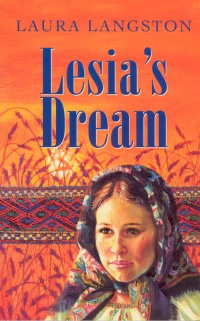
"I spent a long time on Lesia's Dream. It took me a good year to research, and another year of writing. Sometimes I wish I could work faster. The hardest part was researching the internment because the last internee died just as I got into the research, and so I couldn't talk to anyone who had actually been interned. The other thing that I found difficult was that nobody wanted to talk to me about the internment. At first, I thought that it was because I'm not Ukrainian, but then I found out that it was considered so shameful and so horrible and was considered such a black mark that everyone wanted to forget about it unless they were trying to move for government compensation for the internment. While I can respect people who are going after the compensation, I wanted to go 'behind' the story. When I was a journalist, I found that one of the challenges and problems with being a journalist was that it was always the story behind the story that really interested me, the nuances. I always called it the 'juicy bits' - the stuff behind the headlines. What did this mean to people and how did it affect them? That was what I wanted to tell in that novel. Another difficulty was that there were very few pictures. I went back to Manitoba and wanted to look for pictures, but I only found two with one being so fuzzy you couldn't make out what it was. I'm really proud of Lesia's Dream. I worked hard on that book."
In describing her writing habits, Laura says, "I have a basement office and I go down to work every day. I work when my kids are in school, and I sometimes do a bit at night but not often. I'm very focused on my work and very disciplined, but I tend to follow my heart and my gut. I don't know if that's necessarily a bad thing, but it would probably be more practical if I built a steady list of the same kind of books. Instead, I'm doing different, different, different. My mind is always busy, and sometimes I have trouble turning it off. It makes sleeping difficult. Generally, I try to take it easy in the summer, although this past summer I did some nonfiction biographies for Pearson Education. That was a classic situation of not being able to turn off the creative taps! Because I was with my son during the day, I would work early in the morning and then try to spend time with him. Then I'd work after dinner when my husband was home, sometimes until very late at night, before going upstairs to sleep. But my mind would be mulling over words and phrases long after I turned out the light."
"The Pearson books were contract work They were very structured with specific parameters of words per page and lines, but I liked it. I was given my subjects, and I was able to profile two really strong women, Chan Hon Goh, the ballerina, and Rosemary Brown, the politician. Because of my background as a journalist, I know more about politics, but I knew nothing about ballet, and so the Chan Hon Goh book was a real learning experience for me. The books are strictly classroom with the Chan book geared for grade 6 and Brown for grade 5. Writing these books was challenging in a way. It's not creative in the sense that maybe a novel is, but there is a certain amount of creativity in saying, 'Ok, I have to get this material into this length.' The task became very finicky, but I don't mind that sometimes."
"I usually have at least two books on the go, sometimes three. Right now, I'm working on several picture book texts that are in draft form. I'm beginning another young adult novel and I'm brainstorming my next adult novel. I like writing several books at once, but I don't like starting two books at once. It's easier if they are at various stages of the writing process – one finished and in revisions or final edits, another mid-way, that sort of thing."
"I actually love revising, and I used to do a lot of revision as I went along. Now, I like to have the first three chapters at the point where I can say, 'Ok, the story is going to start here,' because sometimes I'll write the first few chapters and they'll end up being thrown away. So, generally I rewrite the beginning chapters a few times. After that, I try hard not to revise much in the first draft stage. What I will do is every morning I'll revise the previous scene a little bit. I'll go back maybe a page or a page and a half, look at what I've done, and that will let me get into the story again. But if I let myself revise heavily in that first draft stage, I'd never get to the end, and so I have to keep going. I'm a perfectionist, and I believe that there's no book that cannot be improved."
While Laura used to be involved in a writers' critique group, she says that "it was just so difficult to get together. As well, it grew to be about five people, and I found that it was taking a lot of time. Now I have two or three other people that I work with. I read their material, and they read mine. I love to go conferences when I can, although I tend to be very protective of my writing time because of my kids and other demands. I'm not very well known as an author, and so I don't get asked to do a lot of school visits although I think that's starting to change. It's a very fine line. You don't make a lot of money on books, and you do make money on school visits. I like the school visits, but I like the writing, and so it's a balance."
For the last 10 years, Laura has contributed articles and been the B.C. correspondent for Canadian Gardening magazine's TransCanada column. While Laura is a gardener, she has to thank her mother for her involvement with the magazine. "My mother saw a copy of Canadian Gardening and suggested, 'This is a new magazine. You should try writing for it.' Well, new magazines are always looking for contributors, and so began my involvement. I love gardening; it keeps me quite sane! It's very grounding, and, since I live in my head so much, gardening helps bring me back to the things that matter. At the same time, it's also a great place to work out plot points and develop story characters!" With some embarrassment, Laura admits, "My garden this year was just terrible. We had gone on a big family holiday in April, and I was doing line edits on Lesia's Dream as well as doing two books for Pearson. Of course, this is the one year in those 10 years I've written for Canadian Gardening that the editor decides to come out from Toronto to visit."
Looking ahead, Laura says, "I've got a couple of picture book texts that I'm working on for Random House. I'd love to work with Lindsey again. I have a romantic suspense novel under consideration at TOR. I have a series of books I've written about a girl named Cat E. Maclean which my agent has been trying to sell. They did sell to Fitzhenry & Whiteside who had them for a year and a half before deciding, 'I think not. We're going to give them back to you.' I'm also working on a contemporary YA novel that's a bit edgy since it delves into a controversial subject. In the same way that Lesia's Dream deals with roots, this one deals with roots but with a180 degree kind of turn. The working title is 'Finding Cassidy,' but titles have a way of changing, just like the books themselves!"
"Sometimes the ideas for my novels start with a character or a person, and sometimes they start with a premise or a problem. No matter what the initial spark is, I can't start writing until I have the character's voice in my head. The main character is all important. Once I know her – or him -- once I can hear them speak, then I can start writing. I have more ideas than I have time. I've had some ideas in my head for 10 years. 'Finding Cassidy', for instance, has been around for a long time. But now Cassidy is talking loud enough that I can hear her."
